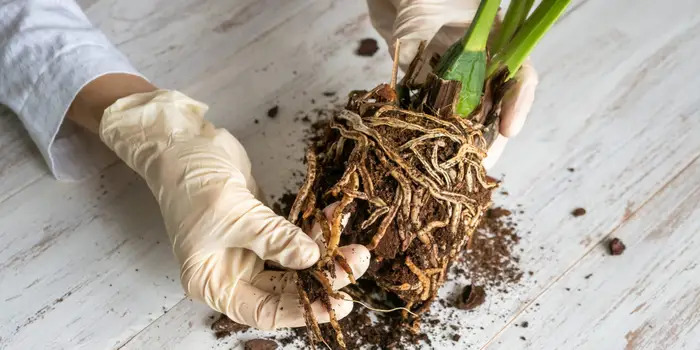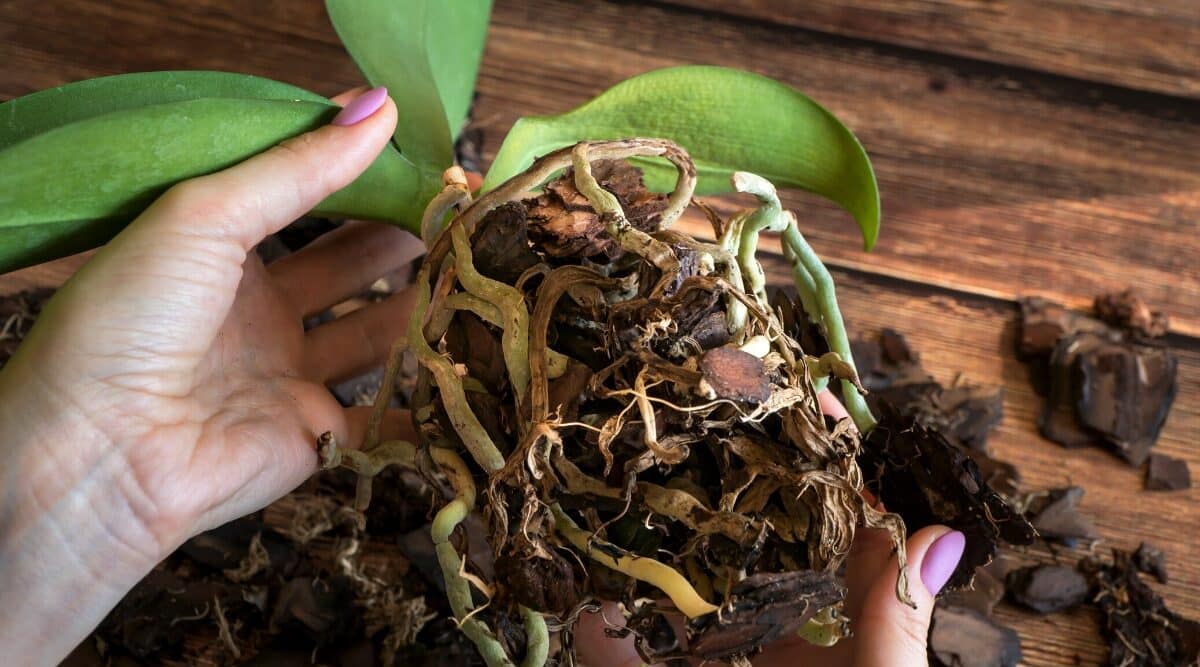How To Get Rid Of Root Rot
Root rot can devastate your plants, leaving them lifeless and unproductive. But, don't worry! We have a solution for you. This guide will delve into the effective methods of diagnosing, treating, and most importantly, preventing root rot in your plants. Whether you're a gardening newbie or a seasoned pro, these tips will help you ensure your plants remain vibrant, healthy, and free from the destructive impacts of root rot.
What Is Root Rot?
Root rot is a common issue among indoor gardeners and outdoor enthusiasts alike. This can be caused by prolonged exposure to damp conditions, such as those created when you overwater your garden plants.
When this happens, the roots become flooded out, making it impossible for them to access oxygen. As a result, these plant roots begin to die back and eventually rot away – hence the name of the disease.
As if that wasn’t bad enough, root rot is highly contagious. Without proper intervention in time, this disease can spread like wildfire throughout an entire garden bed or greenhouse.
Other than severe wilting and browning of the leaves and stems, some of the more obvious signs include slimy or mushy roots that are no longer healthy enough to anchor the structure of your plants in place.
Signs Of Root Rot
Root rot can afflict many different plants and can appear as a result of moisture or excessive water in the soil. The symptoms are often mistaken for underwatering, but it is important to take note of any changes in color or wilting of your plants.
One sure sign that could indicate root rot is when their leaves are turning yellow and curling downwards, although this is a symptom which could be due to many things.
It is important to inspect your garden regularly for signs of fungal disease, as once it has taken hold, it can do serious damage if left untreated. Stagnant water around the roots and constantly damp soil are telltale signs that you have root rot in your garden, so keep an eye out for these.
If you notice any of these pests in the soil or on the plant itself then take action immediately by checking and correcting drainage issues in order to minimize further damage to the plant’s root growth.
Also ensure that you follow recommended watering guidelines for each plant variety as too much or too little water can cause issues with root rot.
How To Prevent Root Rot
It is of utmost importance to take proactive measures in order to avoid root rot from the beginning. Once the roots start decaying and signs become visible, it can be quite challenging to restore optimal conditions within your pot or container.
By adhering to the guidance provided below, you can significantly reduce the likelihood of encountering this issue. In essence, prevention of root rot hinges on selecting the appropriate pot and growing medium, as well as maintaining proper watering habits.
Choose The Right Container & Grow Media
Properly selecting a container and grow media is necessary for the health and longevity of your plants. Starting from day one, you should make sure that the pot you choose has the necessary drainage holes to allow impeded water flow. Without good drainage, your plants will be far more susceptible to root rot due to standing water in their containers.
This danger can be mitigated by selecting media with loose textures and high porosity such as coco fiber, gravel or expanded shale mixtures. These give water somewhere to escape while letting oxygen circulate through the soil.
Warning signs of too-dense soil include sinking or “soupy” sensations when you lift up your pots. If you see these root rot signs in your existing potting combinations, it is advised that you replace them with options that are better draining.
Heavier soils can lead to root rot under certain conditions, if left unaddressed it could result in the death of your plants. To avoid this situation entirely, set yourself up for success from the very beginning by selecting a proper container and grow media combination for your plant’s needs.
Practice Good Watering Hygiene
Good watering hygiene is an essential part of successful plant care. Without proper care, plants are vulnerable to root rot, a type of fungus that can cause wilting and eventually death. To prevent this, it’s important to pay attention to when your plants need water so they can be watered at the right time.
Sticking your finger in the soil up to your first knuckle (an inch at most) can help determine whether your plant really needs more water or not, if the media is dry, then it is likely time to water again.
However, in order to ensure success with your plants, we recommend starting off with our guide on how to properly water them before you even attempt growing anything.
Following this advice increases the chances of keeping them healthy and avoiding any unnecessary mistakes that many new growers make. Therefore, practice good watering hygiene from the start and you will have much better outcomes for your beloved plants!
How To Get Rid Of Root Rot
Numerous methods exist to eliminate root rot, but for any of them to be successful, prompt action is crucial. Taking swift measures will provide your plant with the greatest opportunity to recover and thrive.
Clean & Trim Your Plant
It is important to take proper care of your plants to help ensure their health. When diagnosing a plant with root rot, the first step is to remove it from the soil and wash its roots beneath running water. This will get rid of most of the affected soil and roots while leaving behind a mostly clean and healthy root system.
Next, one needs to use a clean pair of scissors to trim back any rotten roots. This could involve removing parts of the root system as well as part of the plant itself.
For example, up to a third or half of its leaves might need trimming in order to get rid of infection. It may be difficult, but taking this step is important in order for your plant health to remain strong and full long-term.
Get Rid Of Old Soil & Clean Your Garden Pot
The first step to getting rid of old soil and cleaning your garden pot is to remove the plant. As soon as you have done that, it is important to get rid of all the dirt from the container. Discard the old soil as they may contain pathogens that may re-infect your plants. It is best to use a shovel or similar tool for this purpose so you can take out a large amount.
After disposing of the old soil, it’s time to clean the pot. This way, any potential contaminants will be removed from the container and prevent them from affecting future plants you plant in that same location.
The best practice for cleaning garden pots is using warm water and mild soap solution or bleach water mix by 1:10 ratio in a bucket filled with cold water and two tablespoons of dishwashing liquid soap. This solution should be left on for at least a few minutes before rinsing off with plain warm water afterwards - make sure no traces are left behind!
How To Use A Fungicide For Root Rot
Using a fungicide for root rot is an important way to protect your plants from further harm. By treating affected roots with a fungicide, you can prevent the spread of pathogens and reduce the risk of further infection. First, it’s important to delete the affected parts of the plant or soak the entire plant in a fungicidal solution for 15 minutes.
Once this is complete, take cuttings from unaffected portions of the plant as these will be less likely to spread disease. After that, carefully remove any remaining roots, and dip them in a fungicide before replanting them into fresh potting soil. Doing this can help minimize further damage and keep the rest of your garden healthy and resilient.
Put Your Plant In A Bright Spot
The importance of positioning your plants correctly should not be underestimated, as they often need varying levels of light to survive.
Bright sunlight is especially helpful when it comes to encouraging new growth and looking after a sick plant. As such, make sure that you place your freshly-transplanted specimen in an area that gets plenty of natural light.
In the first few weeks, the plant will still be feeling the stress of the transplant and will take some time to rebound. Whatever you do, don’t be alarmed if it isn’t showing signs of life yet!
Consider Transplanting to a New Location
If you’re struggling to keep your plants healthy, one potential solution is to transplant them to a different location. This could help ensure healthier growth, since some soil can just be too waterlogged for even the hardiest of roots.
If the area you want to move your plants doesn’t have natural drainage features like clay or coarse sand, then you may need to excavate and alter the composition of the ground before planting. To do this, make sure you add some compost that will give extra structure to the soil once it drains away any excess moisture.
Just be aware that if transferring your plants mid-season, there are certain elements involved in successful relocation, they must be carefully watered during and after transplanting and shaded during their acclimation period in order to prevent their leaves from drying out or overheating.
Get Rid Of Root Rot By Checking Plants Often & Getting Ahead Of It
Root rot can be a devastating disease for gardeners to experience. If left untreated, root rot will eventually cause plants to die and can be incredibly challenging to reverse once it takes hold of a plant’s roots.
Therefore, it’s important that gardeners familiarize themselves with the symptoms associated with root rot. If a gardener notices any wilting leaves or changes in the texture and color of their soil, then they should take these issues seriously and investigate further to see if they’re dealing with root rot.











